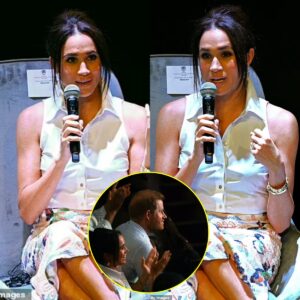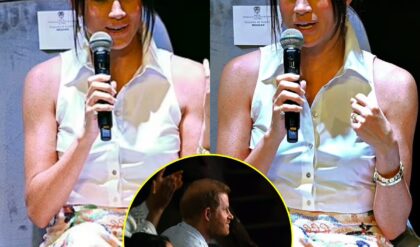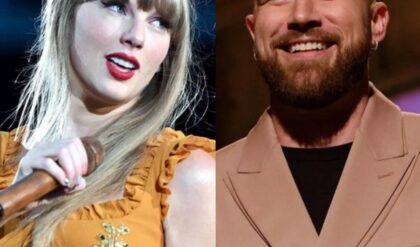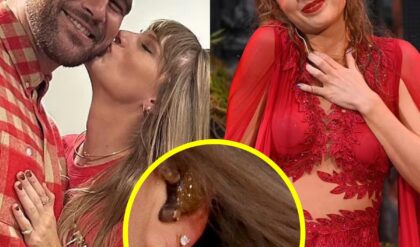Taylor Swift’s Diary Entries Are a Must-Read Companion to ‘Lover’
Four different booklets in special editions of her new album contain reproductions of handwritten journals that reveal what Swift wants us to see — and what she doesn’t.

Taylor Swift onstage at Madison Square Garden in 2009. Special editions of her new album, “Lover,” include diary entries from this time.Credit…Chad Batka for The New York Times
On Friday, when Taylor Swift released her seventh album, “Lover,” she didn’t just deliver 18 songs into the digital ether. As one of the few remaining pop stars to prioritize physical sales, Swift offered her devoted fan base four special-edition CD versions of the album, available exclusively at Target, each accompanied by a booklet containing a reprinted selection of handwritten journal entries spanning her career, from ages 13 to 27.
Instead of collectible fluff, the result, for any close reader of Swift’s work, is a meticulously curated glimpse into the artist’s real-time feelings on an array of issues, people, ideas and squabbles that have defined her life as a musician and celebrity. “I frequently and drastically changed my opinions on love, friends, confidence and trust,” she notes in the introduction to the selections, and then proceeds to show just how.
Across the four unique assortments, Swift tells a piecemeal story of her rise in the industry, where label meetings as a young teenager turn into radio play, record sales, the Grammy Awards and the Met Gala, mixing landmark moments with mundane personal updates, drafts of lyrics and other marginalia.
Jon Caramanica, a New York Times pop music critic, and Joe Coscarelli, the pop music reporter, dug through the entries searching for insights about Swift, her music and her methods of self-presentation.
JOE COSCARELLI Jon, I have to come right out and say that after reading the “Lover” booklets multiple times as if they were Tina Brown’s “Vanity Fair Diaries,” I can’t help but be borderline hyperbolic: Nearly a decade and a half into Swift’s career, which includes seven varyingly diaristic albums and countless hours in the public eye, these carefully selected and expertly pruned diary pages might somehow be the single most revealing cumulative artifact when it comes to establishing what kind of person, artist and operator Taylor Swift has become — and has always been. I’m not sure she’ll ever need a memoir if she has hundreds more of these pages lying around.
Like the best pop culture ephemera, the entries feel like a skeleton key to an Established Persona in ways both intentional and not, leaving the reader to wonder exactly how much self-awareness is involved at any given moment. Most often, the answer is obviously a lot — every page feels designed to address a running theme or controversy in Swift’s career, from her endless ambition to her obsession with fairy-tale love to her anxiety around performance to newer narratives, like her struggles with her body image. But then there are selections that feel so telling, vulnerable and formative that you wonder how such a careful, politician-like celebrity could be so casually, unceasingly herself.
Image

May 19, 2003Credit…TAS Rights Management
Image

Oct. 9, 2010Credit…TAS Rights Management
JON CARAMANICA I gobbled these up as well, but as my excitement was growing with each oh-wow detail, I couldn’t help but think, time and again, that I was being triggered by someone who specifically understands just how much to reveal, and on what terms.
Because of course there’s an entry decrying how the internet was making young people less present in the moment. (Was there also one — not included — talking about how awesome it is?) Of course there’s an entry from when she was still shopping for a record deal where she says she was told that, in country music, “Radio just doesn’t play teens,” which we now know is false (at least, if that teen is named Taylor Swift). These are tiny firecrackers designed to spark empathy, to make any right-minded person sign up to wage Taylor’s battles right alongside her.
COSCARELLI As far as her relationship to technology goes, Swift does call a new iPhone her “soul mate” at age 18. Could we ever have been so innocent?
Don’t get me wrong, more than half the fun of reading these is gut-checking myself on when, exactly, I’m being spun or manipulated, which is exactly how I feel about her best lyrics (and most great art).
The earliest stuff included is in many ways the most impactful for me, because it leaves you feeling as if things could not have ever turned out any differently than they have. A couple of sentences about Swift’s first day of eighth grade in Wyomissing, Pa., from 2003, have all the drive, eagerness, defensiveness, perceived ostracization and earnest optimism we’ve come to expect: “I think my teacher’s gonna give me a spotlight solo in chorus! This year could be fun. I don’t care what people think of me now because I won’t let them bring me down.”
Or elsewhere, also from age 13: “I guess I’m just not good enough for people my own age. OR maybe I’m not bad enough?” The next year, she gives a big “I <3 SCHOOL!” — but only on the day of the talent show, where Swift writes that she “got a standing ovation and everything.”
CARAMANICA Those early entries shook me as well, largely for their prescience — here was a teenager with uncommon drive, fully formed ambition, and the wherewithal to write it all down, as if anticipating the needs of fans, scholars and The New York Times. Imagine, after attending your first Met Gala, having the patience and presence of mind to write a diary entry about everything that happened, including that Jon Bon Jovi said hello.
Image

Swift at her first Met Gala in 2008.Credit…Evan Agostini/Associated Press
COSCARELLI Not only said hello, but “(who called me over to talk to him)” — crucial parenthetical!
For someone who has long been accused by her least generous critics of having a victim or persecution complex, as well as a ruthless corporate spirit, it feels borderline defiant to have included some of this stuff. Though I do wonder if the physical nature of these documents and the scavenger-hunt aspect of collecting them all — a barrier to entry that could keep out all but the most completist fans — allowed Swift to know she would be reaching an overwhelmingly sympathetic audience.
CARAMANICA The diary entries from 2003-06 aren’t simply the loose musings of a young singer with big dreams and, suddenly, the opportunity and resources to pursue them. They also capture the mercenary instincts of the teenage Taylor. Two of the entries begin with her noting her song placements on the Mediabase and Billboard charts.
It all made me a little sad? The teen years are ruthless without the additional pressure of attempting to infiltrate a corporate ecosystem not at all designed for you. In May 2003, she’s practically hyperventilating on the way to Nashville to audition for labels: “I’m okay. I’ll be fine. I’m young. I’m talented. They’ll see it in me. I’ll be okay. I’ve got to hang on. Can’t worry. I’m only 13. I’m allowed to make mistakes, right?” By 19, she’s journaling about management: “I gave everyone in the band raises.” Her crew included 72 people: “Bonused everybody.”
COSCARELLI We should probably talk about the weight and dieting moments, as well. Body image is not something that has traditionally been thought of as a Swiftian subject, but it’s something that she’s begun touching on in interviews and public statements and that’s really prevalent here.
She writes about visiting New York and stopping with her mother at a Tasti D-Lite, the faux-ice cream shop that was a favorite of Carrie Bradshaw. Swift raves about it as “kosher, noncholesterol, extremely tasty, dreamy frozen yogurt and only 40 calories. Does it get any better than that?” She was 13.
At 16, in an otherwise unrelated entry, she drops in: “Oh and I’m dieting again. Over the holidays I didn’t watch what I ate and man it’s so weird how fast I can gain or lose weight. It’s crazy. So I’m going to lose some now.” This is the kind of thing I can imagine really connecting with fans, who might otherwise feel like they know all there is to know about this figure.
Image

May 11, 2008Credit…TAS Rights Management
Image

Sep 18, 2009Credit…TAS Rights Management
CARAMANICA I felt a similar way when, at 13, she wrote about a Code Red drill at her school, which seems like an oblique nod at the current gun control debate, and the ways in which the specter of gun violence has become a reality hanging over American children.
COSCARELLI In this age of celebrities controlling so much of their own narratives via social media, self-helmed multimedia projects and an anemic press, I found these relatively raw, primary-source documents to be a far richer personal text than, say, a Beyoncé documentary or even Swift’s own public writing, like her “30 Things I Learned Before Turning 30” listicle.
And obviously it takes a certain type of person to write things privately that seem from the jump to be designed for posterity, for history, for public consumption, but it feels almost throwback in the way it nods to Important Artists like Springsteen or Dylan donating their archives to major institutions.
CARAMANICA I dare Bob Dylan to donate his teenage diaries to a museum! Also we’ve spoken so much about how we’re waiting for Taylor to make her Joni Mitchell “Blue” album and there’s an entry here where she cops to teaching herself to play the Appalachian dulcimer because that’s what Joni played on that album. We see you, Taylor.
COSCARELLI: And she mentions teaching herself to play “A Case of You,” which felt like an allusion to the writer Bob Lefsetz, a longtime Swift antagonist, claiming that he was the one to introduce Taylor to Joni’s music.
Even as a pure P.R. exercise, the diary includes the sort of tactical sophistication I want from an artist of this size and caliber. There are two drafts of the lyrics for “All Too Well” that cement it as some of her strongest writing; and a tease of an entry — pure wide-eyed naïveté — about Kanye interrupting her at the 2009 MTV Video Music Awards that cuts off before she gets to anything truly juicy. Then there’s the last page of the Version 2 booklet, from August 2016, right after Kim Kardashian West detonated her Snapchat/snake emoji gossip bomb, that just reads: “This summer is the apocalypse,” and nothing more. That’s just great zine-making.
Image

Swift collecting an armful of Grammys at the 2010 awards.Credit…Kevork Djansezian/Getty Images
CARAMANICA That quick line is great, a gut punch neatly rendered on the page. Another of the few late-era Taylor entries is from 2017, three months into her relationship with Joe Alwyn, a brief note on wanting to protect the blossoming relationship “from the nasty world that just wants to ruin things.”
But this, too, is a kind of feint. Apart from this and the occasional fleeting allusion to romance — “haven’t kissed a boy in 209 days” — very little in here is of a personal nature, the sorts of things that typically fill teenage diaries. (That said, I’m certain that there are subtweets to her exes embedded herein.)
All these hand-scrawled sentiments are really in service of a narrative about the predestiny of Taylor’s career — say, capturing the mood the days she wrote “Red” or “I Knew You Were Trouble” — deploying one type of intimacy as a means of eliding a whole other one.
Sometimes, though, the kind she leans in to is telling, and brutal. I’m thinking of the casual allusions to Scott Borchetta, who recently sold Big Machine Records — and with it, the masters to the first six Taylor Swift albums — to Ithaca Holdings, the company led by Scooter Braun, who Taylor perceives as an enemy for his long association with Kanye West. In these entries, Borchetta is portrayed as a good guy, the one record executive who believed in her early — they’re source documents entered into evidence as proof of good faith. But Taylor isn’t including these entries to absolve him — she’s including them to damn him. (He posted a pic on his Instagram nonetheless.)
She does this, too, with the conservative country singer John Rich, who assailed her last year for her support of the Democratic Senate candidate Phil Bredesen, but who at the end of the 2000s was someone she looked up to, and eventually wrote songs with.
COSCARELLI In a lot of ways, it’s a callback to the way she used to leave codes in her album’s lyric booklets that gave more cryptic context and encouraged listeners to match the scenarios to real-life events. These mentions aren’t nearly as subtle.
I also enjoyed the self-effacing moments, like when she writes on Grammys’ eve 2014: “Never have I felt so good about our chances. Never have I wanted something as badly as I want to hear them say ‘Red’ is the Album of the Year.” Swift, of course, has won album of the year twice, but didn’t that time; instead, there was the semi-viral moment of her celebrating preemptively as Alicia Keys, accompanied by Yoko Ono, announced “‘Rrr … andom Access Memories,’ Daft Punk” as the winner.
CARAMANICA: I should say that I’ve maybe never been more impressed with Taylor than I was reading the 2014 entries that suggest that her total time between deciding to move to New York and being essentially fully moved in was under three months. Meanwhile, your favorite pop star has her assistant bookmarking StreetEasy listings that she never clicks on.
But even after all this, there’s one question that’s still nagging at me. What if the entries are all … deepfakes?
COSCARELLI Then they’re the most realistic ones I’ve seen yet.
News
‘He’s an angry boy’: As Prince Harry’s faux-royal tour ends, why despite his jollity and cheeky dancing, one pal claims the Duke’s American dream ‘hasn’t turned out the way he wanted’… and shouldn’t expect an invitation when Wills takes the throne
‘He’s an angry boy’: As Prince Harry’s faux-royal tour ends, why despite his jollity and cheeky dancing, one pal claims the Duke’s American dream ‘hasn’t turned out the way he wanted’… and shouldn’t expect an invitation when Wills takes the…
“Meghan Markle Stuns in Colombia: Princess of Sussex Wows Crowd with Fluent Spanish While Prince Harry Struggles with Earpiece”
“Meghan Markle Stuns in Colombia: Princess of Sussex Wows Crowd with Fluent Spanish While Prince Harry Struggles with Earpiece” Meghan Markle showed off her ability to speak Spanish as she addressed the audience during her ‘Afro women and power’ talk in…
“It’s what I went through…”: Rob Lowe praised Taylor Swift’s fame, saying it is far more intense than what he experienced during his ’80s heyday
“It’s what I went through…”: Rob Lowe praised Taylor Swift’s fame, saying it is far more intense than what he experienced during his ’80s heyday Rob Lowe has some perspective on what Taylor Swift is going through right now. In the 1980s he…
How Taylor Swift and Travis Kelce make their long-distance relationship work – as NFL star’s secret to dating success is revealed
How Taylor Swift and Travis Kelce make their long-distance relationship work – as NFL star’s secret to dating success is revealed As Travis Kelce and Taylor Swift enter year No 2 of their relationship, finding consistent ways to make their long-distance romance survive is…
Taylor Swift shows her love for Travis Kelce at London Eras show
Taylor Swift shows her love for Travis Kelce at London Eras show Taylor Swift subtly showed her love for boyfriend, Travis Kelce, while taking the stage for her first of five performances in London at Wembley Stadium on Thursday. As she returned to…
EXCLUSIVE: Taylor Swift tearfully reveals her parents are in attendance for her second Wembley show as she performs London Boy for the FIRST TIME on her Eras Tour after a three-minute standing ovation from fans..
EXCLUSIVE: Taylor Swift tearfully reveals her parents are in attendance for her second Wembley show as she performs London Boy for the FIRST TIME on her Eras Tour after a three-minute standing ovation from fans.. Taylor Swift tearfully revealed her parents…
End of content
No more pages to load











